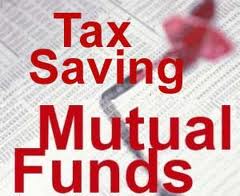Equity Linked Savings Scheme or ELSS is a Tax Saving Investment option where investment from individual are investment in Equity and Equity linked securities.All ELSS Instrument has a 3 years Lock In period and Investment made under ELSS Scheme offer Tax Benefit under 80C of Indian Income Tax act.
There is no restriction on investment in Mutual fund and online can invest as low as Rs 500 as SIP to any of the ELSS Scheme offer by different fund houses.
What Are The Expected Returns on Investment made under ELSS ?
There are number of Fund houses under operation and each of them have number of ELSS with different option to invest upon. Different ELSS Scheme by various fund houses have different returns from Minimum 1% To 12% or even more as three year returns with average CAGR of 18%.
What are the different types of ELSSs?
Key Highlights :
There are mainly Two type of tax Saving ELSS Mutual funds, which are classified on the basis of investment option.They are either Growth Option or Dividend Option.
Growth Option : Under the growth mode of ELSS investment all the income earned by investor are reinvest to the fund itself. There is no distribution of income to the investor.
Dividend Option : Under the dividend option in ELSS fund pays dividend to investor from time to time as and when the dividend is declared.
Dividend Re Investment : Under this option of investment Dividend paid are re investment to purchase the additional units.
Advantages of ELSS Tax Saving Mutual Funds
Advantages and disadvantages are one own perception. Anyway I have explained the some of the common advantages of ELSS Tax Saving Funds.
1. Investor get Income Tax benefit under Section 80C of Income Tax India Act
2. Apart from tax savings, the investor receives Capital gains or high returns
3. A very small amount can be invested even as low as Rs 500
4. Return amount on investment is also Tax Free
5. Dividend declared by fund houses are also Tax Free
Tax Benefits Under ELSS ?
According to Income Tax Act the Investments in ELSSs qualify for deduction under section 80-C. The maximum deduction available for rebate is Rs 1,00,000. The return on ELSS scheme after lock in period is also Tax Free.
| Comparison of ELSS with Other Tax Saving Instruments | ||||||
|---|---|---|---|---|---|---|
| Instruments For Investment | Lock-in Period (years) | Risk Level | Expected Returns@CAGR | Minimum investment (Rs) | Maximum investment (Rs) | Tax status on returns |
| Public Provident Fund (PPF) | 15 | Low | 8.8 | 500 | 100,000 | Tax free |
| National Savings Certificate (NSC) | 5 | Low | 8.6 | 100 | NA | Taxable |
| 10 | Low | 8.9 | ||||
| Bank Fixed deposits | 5 | Low | Prevailing 5 Year Rates | 10,000 | 1,00,000 | Taxable |
| Equity Linked Savings Schemes (ELSS) | 3 | High | Stock Market Linked | 500 | 1,00,000 | Tax free |
| Unit Linked Insurance Policy (ULIP) | 5 | High | Stock Market linked | varies from 5000 To | 1,00,000 | Tax free |






